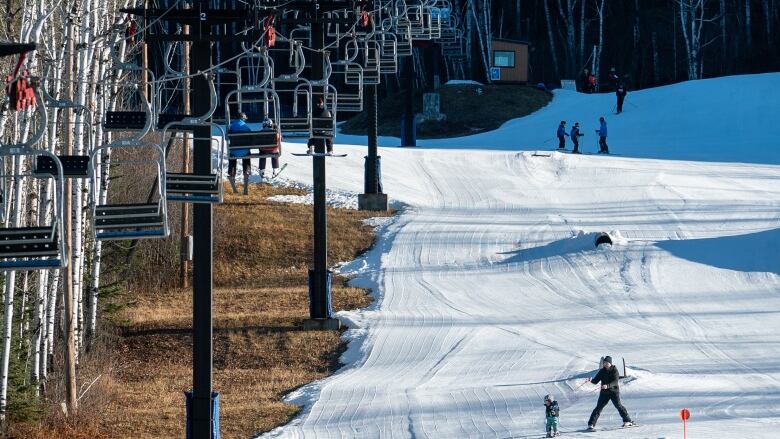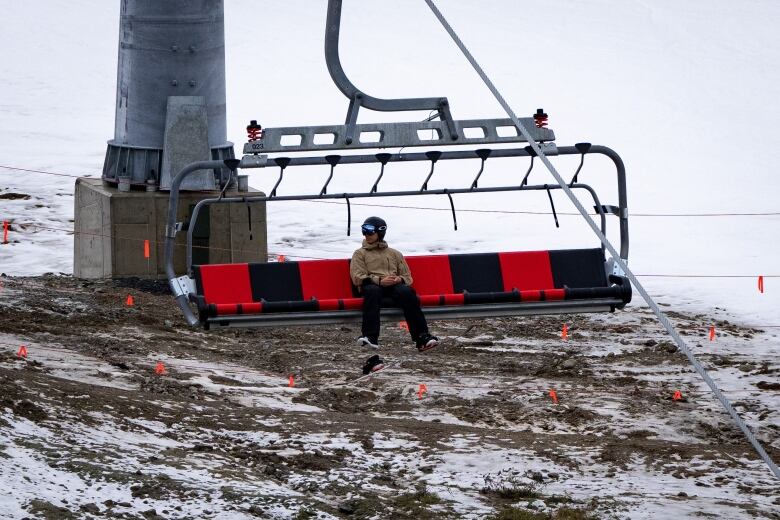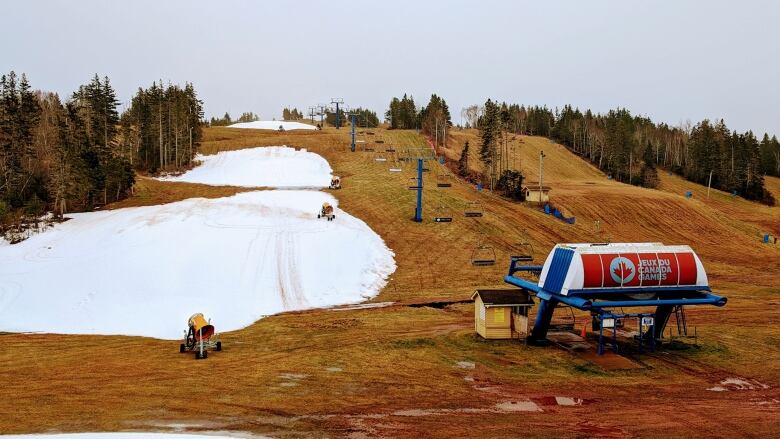Ski industry increasingly making artificial snow as Mother Nature fails to deliver
Costs, impact on climate cited as negatives to snow-making amid milder winter temperatures

At Cypress Mountain ski resort, director of operations Jeremy Wentzel has been eagerly waiting for a chance to fire up the snow guns.
The Vancouver ski destination has manufactured more than 32hectares of artificial snow for skiers and boarders to enjoy since openingDec. 7 for the season, but much of that was lost to rainfall and warm temperatures later in the month.
With cooler weather in the forecast, however, Wentzel said a prime opportunity to pump out fresh powder could be just around the corner.
"We're just waiting for temperatures to fall slightly, because we're getting very, very close to a pretty significant snow-making window," Wentzel said.
"It has been a challenge this Christmas period. But temperatures do generally get there eventually, and then you get to put on display what having a robust snow-making system can do for you."
Artificial snow-makingwhich involves using machines, or "guns," to spray a mixture of water and compressed air that then freezes into snowflakes has been used by the Canadian ski industry since its development in the 1950s.
But with climate change now posing an existential threat to an industry that depends on winter weather, snow-making is expected to become more important than ever.
Snow-making to increase by 2050
A University of Waterloo study conducted in partnership with the University of Innsbruck in Austria suggests snow-making production requirements by the Canadian ski industry will increase between 55 and 97 per cent by 2050, as climate change brings warmer winters and less natural snowfall.
In Ontario alone, for example, changing weather patterns due to climate change could shorten the average length of the ski season by up to 60 per cent.
Already, in an average winter, Canadian ski resorts produce an estimated 42 million cubic metres of machine-made snow.
But making snow is not as simple as hitting a switch and blasting flakes wherever and whenever you want them. For one, the weather must be cold enough for water to freeze, so all the snow-making capability in the world won't help in an extended plus-zero-degrees streak.
"There is a bit of a conundrum there," said Tara Lovell, spokespersonfor Ontario's Blue Mountain Resort, where an
exceptionally mild December meant a limited number of runs were open over the holiday season.
"I would say that our [snow-making]system hasn't been able to get up and running as much as we would have liked."

Snow-making is also expensive. It requires the installation of water pipes and pumphouses, hydrants and snow guns across significant swaths of terrain. This year, Blue Mountain committed to a "multi-year, multimillion-dollar" investment in snow-making infrastructure improvements that includes enhancing the system's automation capabilities, Lovell said.
These kinds of investments are meant to help the resort navigate increasingly erratic weather patterns, she added.
"Decades ago, you could kind of guarantee that winter will eventually come and we can make snow when it's here. But now, those snow-making windows can come in the middle of the night for just an hour here, an hour there.
"So the more efficient our system is, the better off we are at making sure we're maximizing what we can, despite the volatility of Mother Nature," Lovell said.
Does snow-making contribute to climate change?
Activists, however, have criticized snow-making, saying it contributes to climate change.
The University of Waterloo study found artificial snow production at Canadian ski resorts consumes 478,000 megawatt-hours of electricity annually and an estimated 43.4 million cubic metres of water.
As the demand for artificial snow grows, so too will ski resorts' demand for water and power.
The sustainability of snow-making varies greatly from location to location, depending on the source of the water and how green the local electricity grid is,Waterloo Prof. Daniel Scott said.

He said the ski industry will need to ensure snow-making is being done in a responsible way in particular, limiting negative impacts on downstream watersheds and conflict with other water users.
Snow-making "can be very unsustainable, or it can be very sustainable," Scott said.
For her part, Lovell said, she believes there are few industries more concerned about sustainability than the ski industry.
"I can't forecast what is yet to come when it comes to climate change, but we do see those changes happening," she said.
"For our business to be sustainable, we need to make sure that we can continue to provide a snow-related product to our guests, despite what we're seeing and the trends that may be coming."
At Cypress Mountain in Vancouver, Wentzel said the resort likely would not have been open at all over the holidays if it didn't have its snow-making system. He said creating snow is a way for the ski industry to take back some control from Mother Nature.
"Snow-making has been a huge investment priority for us," he said. "It's a pretty big insurance policy for the mountain, because it allows you to manage your own fate, if you will."













_(720p).jpg)


 OFFICIAL HD MUSIC VIDEO.jpg)
.jpg)



























































































